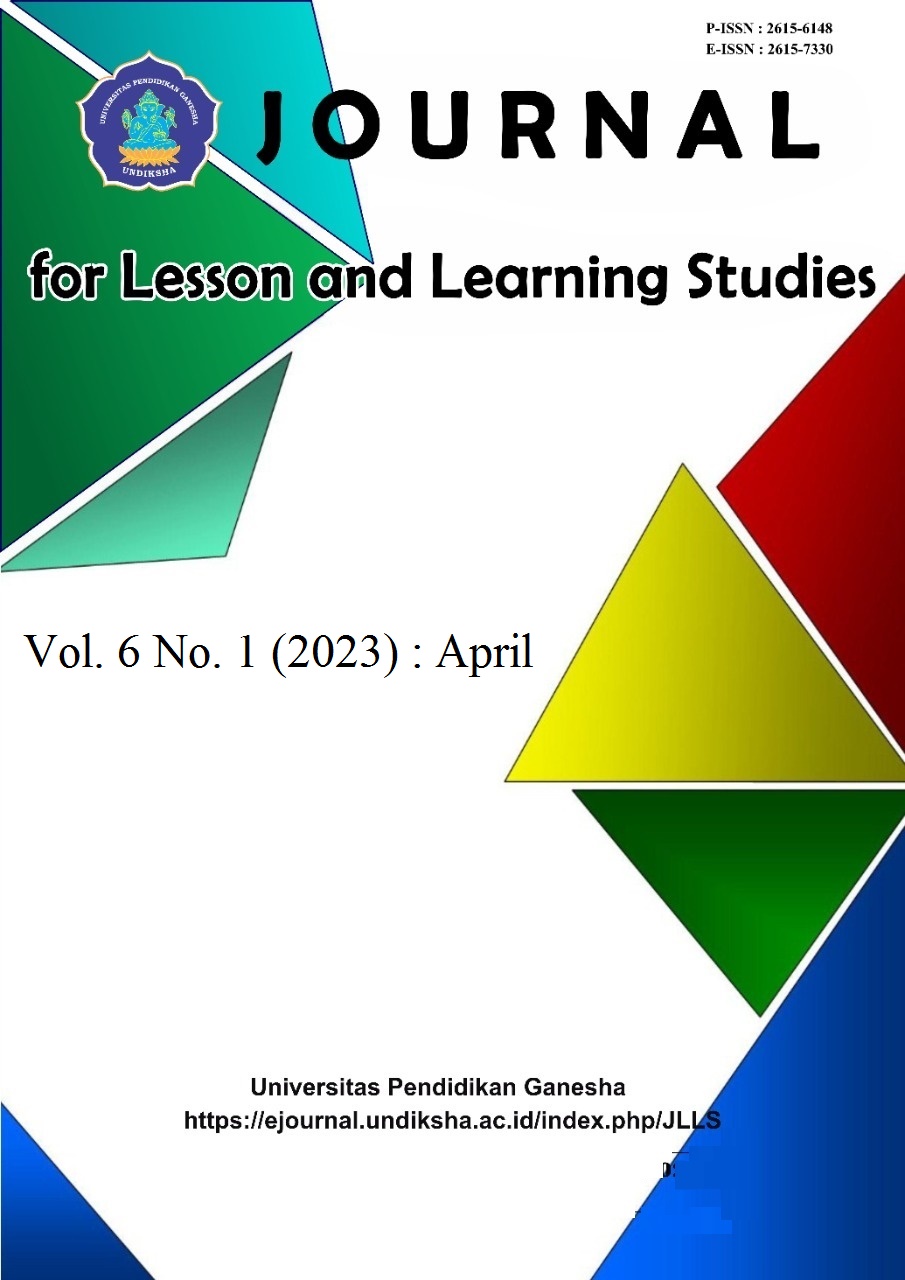Zig-Zag and Shuttle Run Training on the Results of the Agility of Karateka
DOI:
https://doi.org/10.23887/jlls.v6i1.61394Keywords:
Karate, Zig-Zag, Agility, Shuttle-RunAbstract
The agility of Karate athletes is still low. It is evident that when participating in the match, the athlete’s movements appear to be less agile when avoiding the opponent’s attack. The purpose of this study was to analyze zig-zag and shuttle run training in improving agility in Karateka. This study used a quasi-exsperimen method with a pre-test and post-test design control group. The population in this study were all Karateka athletes consisting of 20 male athletes and 18 female athletes. The sample used was 20 male athletes who were still actively training. Data collection methods used observation, tests and documentation. Data analysis techniques used quantitative analysis. The results showed that shuttle run training had a significant effect on increasing agility (tit equal to 60.42 more than ttab equal to 2.26). Ziq-zaq exercise gives a significant effect on increasing agility (thit equal to 159.06 more than ttab equal to 2.26). Ziq-zaq run training is more effective in increasing agility compared to shuttle run training (thit equal to 26.64 more than ttab equal to 2.26). The conclusion of this study is that training with the zig-zag run method is more effective in increasing agility in Karateka. The implication of this research is expected to increase the element of agility for athletes so that achievement can be achieve.
References
Abdessalem, R., Boukhris, O., Hsouna, H., Trabelsi, K., Ammar, A., Taheri, M., & Chtourou, H. (2019). Effect of napping opportunity at different times of day on vigilance and shuttle run performance. Chronobiology International, 36(10), 1334–1342. https://doi.org/10.1080/07420528.2019.1642908. DOI: https://doi.org/10.1080/07420528.2019.1642908
Alp, M., & Gorur, B. (2020). Comparison of Explosive Strength and Anaerobic Power Performance of Taekwondo and Karate Athletes. Journal of Education and Learning, 9(1), 149–155. https://doi.org/https://eric.ed.gov/?id=EJ1241017. DOI: https://doi.org/10.5539/jel.v9n1p149
Cahyono, D., & Abdurrochim., M. (2022). Effect Of Leg Vest And Rubber Load Training On The Sickle Kick Ability Of Psht Pencak Silat Athletes Of Samarinda City. International Journal Of Humanities Education and Social Sciences (IJHESS), 1(5). https://doi.org/10.55227/ijhess.v1i5.154. DOI: https://doi.org/10.55227/ijhess.v1i5.154
Elisa, Prasetyo, S. A., & Hadi, H. (2019). Penanaman Nilai-Nilai Pendidikan Karakter Siswa Melalui Kegiatan Ekstrakurikuler Pramuka. Mimbar PGSD Undiksha, 7(2), 114–121. https://doi.org/10.23887/jjpgsd.v7i2.17553.
Fransiska, A., Suhdy, M., & Syafutra, W. (2021). Penerapan Latihan Shuttle Run pada Atlet Lari Jarak Pendek di Club Linggau Runners. Gelanggang Olahraga: Jurnal Pendidikan Jasmani Dan Olahraga, 5(1), 40–50. https://doi.org/10.31539/jpjo.v5i1.2872. DOI: https://doi.org/10.31539/jpjo.v5i1.2872
Hudain, M. A., & Ishak, M. (2020). Kontribusi Kecepatan Reaksi Tangan Dan Kekuatan Otot Lengan Terhadap Kecepatan Pukulan Gyaku Tsuki Chudan. SPORTIVE: Journal Of Physical Education, Sport and Recreation, 4(1), 46. https://doi.org/10.26858/sportive.v4i1.17175. DOI: https://doi.org/10.26858/sportive.v4i1.17175
Ilahi, W., & Badri, H. (2021). Latihan Zig-Zag Run Dan Shuttle Run Terhadap Kemampuan Dribbling Pemain Sekolah Sepakbola. Jurnal Stamina, 4(2), 89–94. http://stamina.ppj.unp.ac.id/index.php/JST/article/view/755.
Juntara, P. E. (2019). Latihan Kekuatan dengan Beban Bebas Metode Circuit Training dan Plyometric. Altius: Jurnal Ilmu Olahraga Dan Kesehatan, 8(2). https://doi.org/10.36706/altius.v8i2.8705. DOI: https://doi.org/10.36706/altius.v8i2.8705
Kardani, G., & Rustiawan, H. (2020). Perbandingan Hasil Latihan Lari Shuttle Run Dengan Latihan Shadow Terhadap Kelincahan Footwork Pada Cabang Olahraga Bulutangkis. Jurnal Keolahragaan, 6(2), 105–111. https://doi.org/10.48144/jiks.v13i2.254. DOI: https://doi.org/10.25157/jkor.v6i2.4935
Listiana, S., & Isdaryono, I. (2019). Pengembangan Model Latihan Keterampilan Teknik Bawah Pencak Silat Untuk Atlet Kategori Tanding Remaja. Altius: Jurnal Ilmu Olahraga Dan Kesehatan, 8(2). https://doi.org/10.36706/altius.v8i2.9510. DOI: https://doi.org/10.36706/altius.v8i2.9510
Lystad, R. P., Augustovičová, D., Harris, G., Beskin, K., & Arriaza, R. (2020). Epidemiology of injuries in Olympic-style karate competitions: systematic review and meta-analysis. British Journal of Sports Medicine, 54(16), 976–983. https://doi.org/10.1136/bjsports-2020-101990. DOI: https://doi.org/10.1136/bjsports-2020-101990
Malasari, C. (2019). Pengaruh Latihan Shuttle-Run dan Zig-Zag Run terhadap Kelincahan Atlet Taekwondo. Gelanggang Olahraga: Jurnal Pendidikan Jasmani Dan Olahraga, 3(1), 81–88. https://doi.org/10.31539/jpjo.v3i1.828. DOI: https://doi.org/10.31539/jpjo.v3i1.828
Muslihin, M., Septiadi, F., & Saputri, H. (2020). Pengaruh Latihan Ladder Drills Dan Zig Zag Run Terhadap Kelincahan Tendangan Sabit Kanan Kiri Pesilat Putra Tapak Suci Caringin Sukabumi. RIyadhoh: Jurnal Pendidikan Olahraga, 3(2), 75–79. https://doi.org/10.31602/rjpo.v3i2.3293. DOI: https://doi.org/10.31602/rjpo.v3i2.3293
Przybylski, P., Janiak, A., Szewczyk, P., Wieliński, D., & Domaszewska, K. (2021). Morphological and motor fitness determinants of shotokan karate performance. International Journal of Environmental Research and Public Health, 18(9), 4423. https://doi.org/10.3390/ijerph18094423. DOI: https://doi.org/10.3390/ijerph18094423
Ruslan, R., Mile, S., & Sangadji, F. (2021). Zig-Zag Running Exercises For Ball Drill Skills. Jambura Journal of Sports Coaching, 3(1), 33–38. https://doi.org/10.37311/jjsc.v3i1.9644. DOI: https://doi.org/10.37311/jjsc.v3i1.9644
Sari, L. P., Sundari, D., Hendrawan, D., Karo, A. A. P. K., & Usman, K. (2021). The Effect of Circuit Training and Beetroot Training on the Increased Endurance of Karate Athletes. ACPES Journal of Physical Education, Sport, and Health (AJPESH), 1(1), 41–49. https://doi.org/10.15294/ajpesh.v1i1.46299. DOI: https://doi.org/10.15294/ajpesh.v1i1.46299
Sutini, A. (2018). Meningkatkan Keterampilan Motorik Anak Usia Dini Melalui Permainan Tradisional. Cakrawala Dini: Jurnal Pendidikan Anak Usia Dini, 4(2), 67–77. https://doi.org/10.17509/cd.v4i2.10386. DOI: https://doi.org/10.17509/cd.v4i2.10386
Tofikin, R. S. (2020). Zig-Zag Run: Metode Latihan Kelincahan Tendangan Sabit Pencak Silat. Journal Sport Area, 5(2). https://doi.org/10.25299/sportarea.2020.vol5(2).5333. DOI: https://doi.org/10.25299/sportarea.2020.vol5(2).5333
Wahono, Sa’ada, N., & Kurniawati, T. (2017). Pembelajaran Interaktif Media Film Pendek. Pedagogi : Jurnal Anak Usia Dini Dan Pendidikan Anak Usia Dini, 3(3), 198–211. https://core.ac.uk/download/pdf/229569990.pdf.
Wahyudi, A. N. (2018). Pengaruh Latihan High Intensity Interval Training (Hiit) dan Circuit Training Terhadap Kecepatan, Kelincahan, dan Power Otot Tungkai. JSES: Journal of Sport and Exercise Science, 1(2), 47–56. https://doi.org/10.26740/jses.v1n2.p47-56. DOI: https://doi.org/10.26740/jses.v1n2.p47-56
Yuliana, A., & Wahyudi, H. (2022). Analisis Kondisi Fisik Atlet Putri Pencak Silat Kategori Tanding Ekstrakurikuler Usia 15-16 Tahun SMA Negeri 12 Surabaya. JOSSAE (Journal of Sport Science and Education), 7(1), 34–41. https://journal.unesa.ac.id/index.php/jossae/article/view/16330.
Downloads
Published
How to Cite
Issue
Section
License
Copyright (c) 2023 Kadek Yogi Parta Lesmana

This work is licensed under a Creative Commons Attribution-ShareAlike 4.0 International License.
Authors who publish with the Journal for Lesson and Learning Studies agree to the following terms:
- Authors retain copyright and grant the journal the right of first publication with the work simultaneously licensed under a Creative Commons Attribution License (CC BY-SA 4.0) that allows others to share the work with an acknowledgment of the work's authorship and initial publication in this journal.
- Authors are able to enter into separate, additional contractual arrangements for the non-exclusive distribution of the journal's published version of the work (e.g., post it to an institutional repository or publish it in a book), with an acknowledgment of its initial publication in this journal.
- Authors are permitted and encouraged to post their work online (e.g., in institutional repositories or on their website) prior to and during the submission process, as it can lead to productive exchanges, as well as earlier and greater citation of published work. (See The Effect of Open Access)




